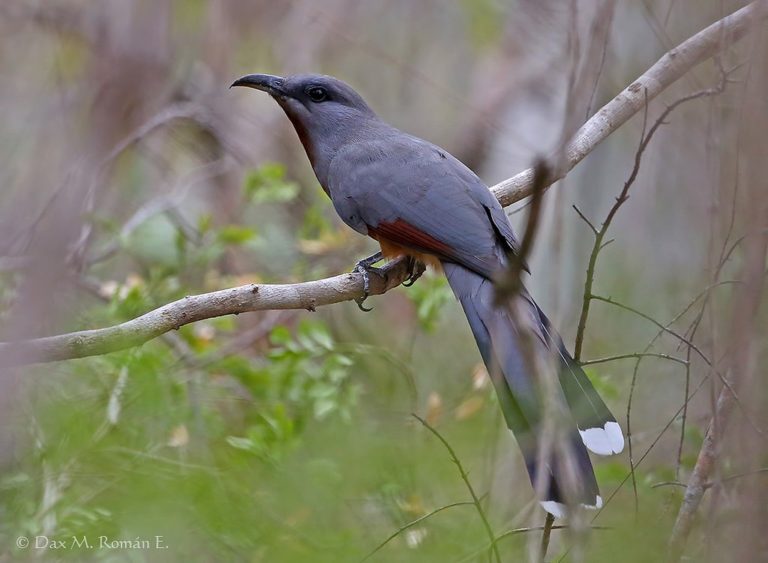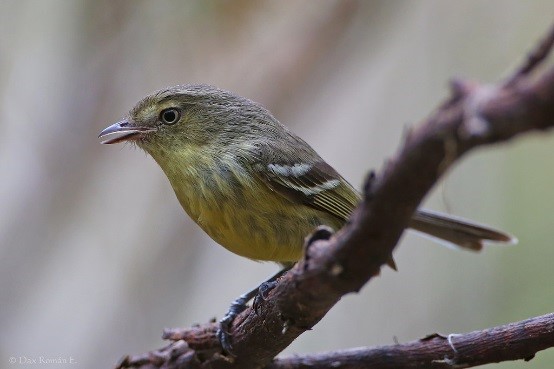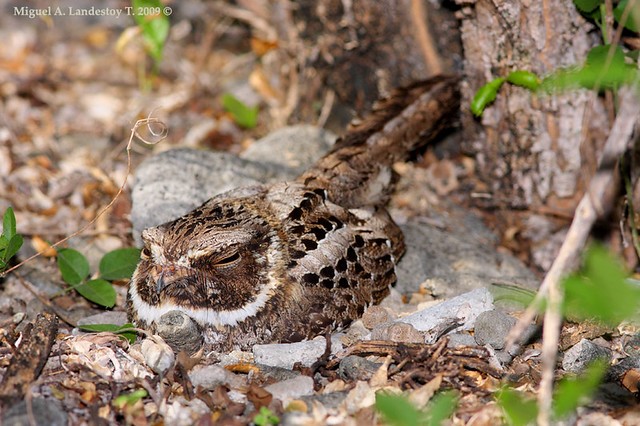La Placa, Dominican Republic

The northern foothills of the Sierra de Bahoruco around La Placa support the only known significant population of Bay-breasted Cuckoo, the rarest of Hispaniola’s endemics. Most visitors to this area pass through on their way to and from Zapotén, pausing on the return trip mainly to search for the cuckoo. Other species of interest here include Flat-billed Vireo and at night Ashy-faced Owl, Least Pauraque, and Hispaniolan Nightjar.
Orientation
Directions
La Placa is the main entrance to Sierra de Bahoruco National Park, about an hour and 20 minutes (75 km) from Barahona or four hours (260 km) from Santo Domingo.
From Barahona. Follow Route 44 northwest into the farmland for about 1 km, then turn west on Route 46 (signposted for Cabral) and drive approximately 50 km into Duvergé. Upon entering the town, you will see a gas station on your left. At the fifth intersection after the gas station, turn left on Avenida Nuestra Señora del Carmen, which is the road to Puerto Escondido and Sierra de Bahoruco National Park. Soon after leaving Duvergé, the pavement ends and the dusty gravel road winds up through arid foothills 11 km to the village of Puerto Escondido.
As you enter Puerto Escondido, the Sierra de Bahoruco National Park main office is the second building on the right. If the office is open when you arrive, it is a good idea to stop and pay the nominal fee for a ticket to enter the park.
In Puerto Escondido, follow the main road west by taking a right at the T-junction. This road is well-maintained until La Placa (11 km), where a gate and guards control entry into the park. To pass through the gate legally requires a ticket purchased at the park office, but if the timing of your arrival prevented you from buying a ticket, the guards have a history of showing compassion and letting people through with a promise to buy a ticket later. (But without a ticket in hand, there is no guarantee of entry.)

La Placa is the best place to search for the rare Bay-breasted Cuckoo. © Dax M. Román E.
Birdfinding
La Placa refers to the park entrance, where there is a small, indistinct trail into the deciduous forest behind the park building on the north side of the road. This trail is often productive for birds including Bay-breasted Cuckoo and Flat-billed Vireo, among others, but at midday in particular it can be uncomfortably hot and buggy.
Both the cuckoo and the vireo are best located by voice, and can usually be found most efficiently by covering some distance on foot along the road either above or below the park entrance. The cuckoo is more likely to be found some distance uphill from the entrance gate (especially where the road first becomes steep), and the vireo seems to be more common downhill from the gate.

The peculiarly shaped Flat-billed Vireo can often be found at La Placa. © Dax M. Román E.
Other species that can often be found in the area include: Scaly-naped and Plain Pigeons, Ruddy and Key West Quail-Doves, Hispaniolan Lizard-Cuckoo, Broad-billed and Narrow-billed Todies, Antillean Piculet, Jamaican Parakeet (much more common here than Hispaniolan), Hispaniolan Pewee, Stolid Flycatcher, Eastern Red-legged Thrush, Hispaniolan Euphonia, Green-tailed Warbler, and Greater Antillean Bullfinch.
Night Birds. La Placa is one of the best places in the D.R. for endemic night birds. Ashy-faced Owl, “Hispaniolan Burrowing Owl”, Least Pauraque, and Hispaniolan Nightjar all occur in this area.

La Placa is one of the most likely places to find Least Pauraque. © Miguel A. Landestoy T.
“Hispaniolan Burrowing Owl” and Least Pauraque are fairly common below the entrance gate, where there are a few tracks off of the main road that can be explored.
Hispaniolan Nightjar can usually be heard at night along the road above the gate. Ashy-faced Owl is not common in this area, but at times there has been a known roost or nest along the trail by the guard shack.
Services
Accommodations
Most foreign birdwatchers prefer to stay near Puerto Escondido at Villa Barrancolí, owned by Kate Wallace and also known as Kate’s Camp, which has accommodations for 12 guests: six cabins with two beds each. There is a bath house with hot showers and an open dining area, where the manager’s wife will serve lunch or dinner upon request (whereas breakfast is assumed). Kate also owns and operates Tody Tours, facilitating ecotourism throughout the D.R., with a particular focus on endemic birds. In addition to organizing and conducting tours, Kate can connect independent travelers with local guides—a particularly important service for visits to Zapotén. She can be reached at katetody@gmail.com.
Alternative accommodations nearby consist of a hostel in Puerto Escondido (from the park office, turn west off the main road, and the hostel will be the third house on the right) and two hotels in Duvergé: Hotel La Casona (“The Big House”; at the intersection of Route 46 and Avenida N.S. del Carmen) and Hotel Argentina (one block north of the same intersection, beside the church on Calle La Canela).
Food
There are no services beyond Puerto Escondido, and dining options there are scarce. Like most small towns in the D.R., it has a one or two bars that keep cold drinks and snacks on hand.
For anything that resembles a restaurant or grocery store, the nearest establishments are in Duvergé.
Notes
When to Visit
As with other forested sites in the D.R., the best time to visit is approximately February through May, when the endemics are most vocal and conspicuous.
Hazards & Hassles
The deciduous forest is surprisingly buggy, often dense with mosquitoes. Repellent can be a crucial supply.